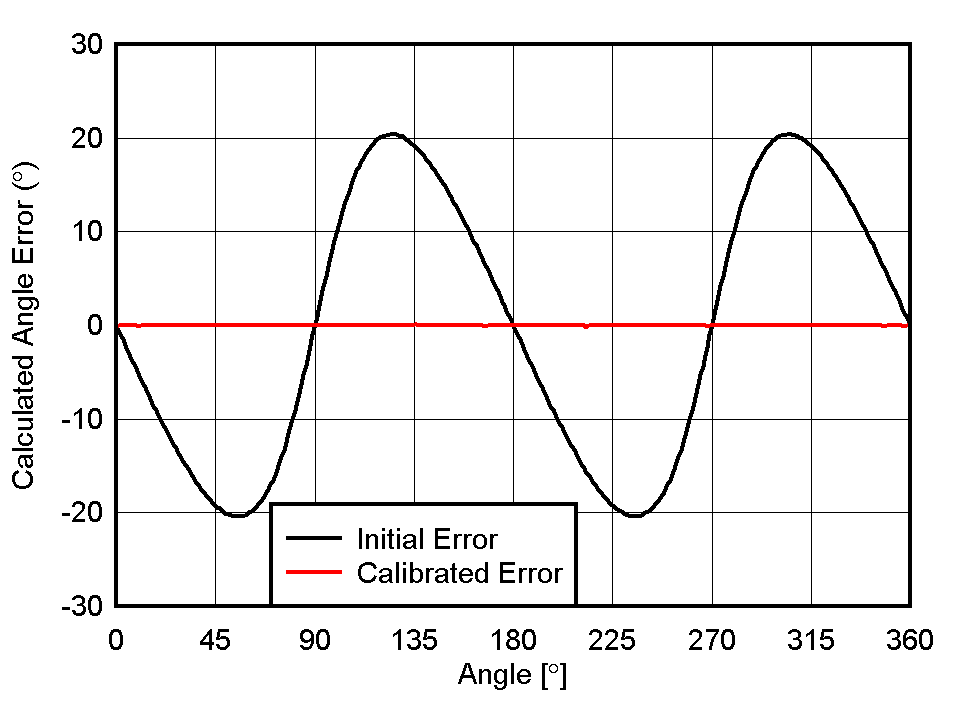SBAA463A january 2021 – april 2023 TMAG5170 , TMAG5170-Q1 , TMAG5170D-Q1 , TMAG5173-Q1 , TMAG5273
2.2 Sensitivity Matching
Whenever device sensitivity is matched such that each sensor produces equal amplitude outputs, the scenario shown in Figure 1-6 is resolved. For the greatest design flexibility, we need a way to achieve matching when using In-Plane and Off-Axis alignments. In each of these configurations, it is not uncommon to observe unequal peak amplitudes between the field components. Given this behavior, the use of these signals with the ATAN2 function will naturally exhibit an error similar to what is observed with a sensitivity mismatch. As the mismatch in amplitude increases, the severity of the angle error will likewise increase.
Hall elements in a single package undergo the same manufacturing and processes and it is reasonable to expect that the performance between any two sensors within the same device to be more naturally matched. However, even if the sensors were perfectly matched, we could still anticipate the error that results from unequal input magnitudes.
TMAG5170 solves this problem by allowing the user to normalize the calculation by attenuating the larger of the two inputs. For example, we can adjust the peak amplitudes seen in the In-Plane example such that the expected angle accuracy would only be limited by input referred noise and quantization error.
 Figure 2-7 In-Plane Angle Error vs Input
Correction
Figure 2-7 In-Plane Angle Error vs Input
CorrectionThe ability to normalize the two outputs to each other makes TMAG5170 versatile in any angle sensing application.